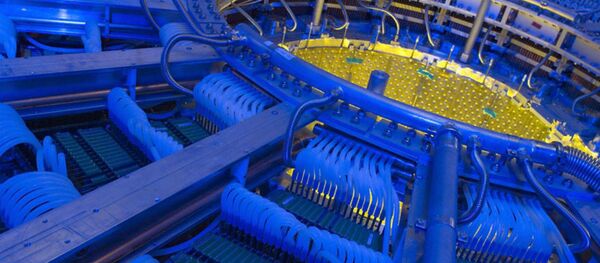In 1928, English theoretical physicist Paul Dirac postulated every fundamental particle in the universe has an antiparticle — an identical twin, with an opposite charge — and when this pair met they would be annihilated, creating an explosion of energy.
Not long after, the first antimatter particle — positron, the electron's opposite — was discovered, and antimatter quickly became part of popular culture, and scientific theory.
Matter and anti-matter are now fundamental to theories of the Big Bang — if and when the event created the universe out of nothing, the accompanying explosion created equal amounts of matter and anti-matter.
In 1937, Italian physicist Ettore Majorana updated Dirac's theories with a bold new feature — he suggested that within the group of particles known as fermions (including the proton, neutron, electron, neutrino and quark), particles should be their own antiparticles. This hypothesis was subsequently dubbed the "Majorana fermion."
Now, the combined research team believes it has found the first firm evidence of such Majorana's predicted phenomenon, following a series of lab experiments on exotic materials.
The type of Majorana fermion the teams observed is known as a "chiral" fermion — it moves along a one-dimensional path in one direction.
"Our team predicted exactly where to find the Majorana fermion and what to look for as its 'smoking gun' experimental signature. This discovery concludes one of the most intensive searches in fundamental physics, which spanned exactly 80 years," said Professor Shoucheng Zhang, a theoretical physicist at Stanford, and a senior author of the team's research paper.
Professor Zhang has suggested the Majorana fermion uncovered by his team should be dubbed the "Angel Particle" — a reference to Dan Brown's best-selling 2000 thriller Angels and Demons, in which a secret organization plots to blow up the Vatican via a matter-antimatter time bomb.
The first firm evidence of a Majorana fermion "concludes one of the most intensive searches in fundamental physics." https://t.co/fjHosrm2Fk
— Stanford University (@Stanford) July 20, 2017
While the experiments that produced the discovery were extremely difficult to conceive, set up and carry out, the signal they produced was clear and unambiguous, the researchers said.
Their findings are supported by Frank Wilczek, theoretical physicist and Nobel laureate at the Massachusetts Institute of Technology, who was not involved in the study. He said the team's observation of the particle "in a clean, robust way" represented a "real milestone."
In the experiment, the teams stacked thin films of two quantum materials — a superconductor and a magnetic topological insulator — and sent an electrical current through them, inside a chilled vacuum chamber.
The top film was a superconductor, the bottom a topological insulator that conducts current only along its surface or edges, but not through its middle. Putting them together created a superconducting topological insulator, where electrons zipped along two edges of the material's surface without resistance.
A small amount of magnetic material was added to the topological insulator, making the electrons flow one way along one edge of the surface and the opposite way along the opposite edge.
Then the researchers swept a magnet over the stack, making the flow of electrons slow, stop and switch direction. These changes were not smooth, but took place in abrupt steps, like identical stairs in a staircase.
At certain points in this cycle, Majorana quasiparticles emerged, arising in pairs out of the superconducting layer and traveling along the edges of the topological insulator just as the electrons did previously — and like the electrons, they slowed, stopped and changed direction, in steps exactly half as high as the ones the electrons took.
While a stunning discovery in purely scientific terms, the breakthrough has commercial implications — these fermions could be what raises quantum computing out of scientific aspiration into reality.
The key problem that has hitherto limited the development of quantum computers include their need to be insulated from environmental noise, and storage of qubits (quantum bits). It's thought one qubit could be stored in two separate Majorana fermions — so even if interference affected information in one, the other would almost certainly keep it safe.






